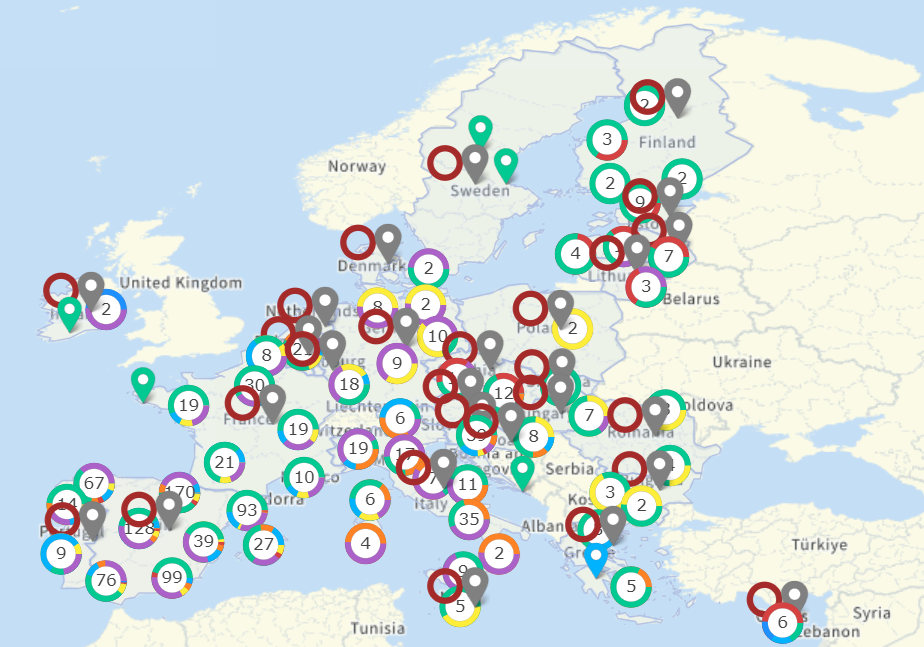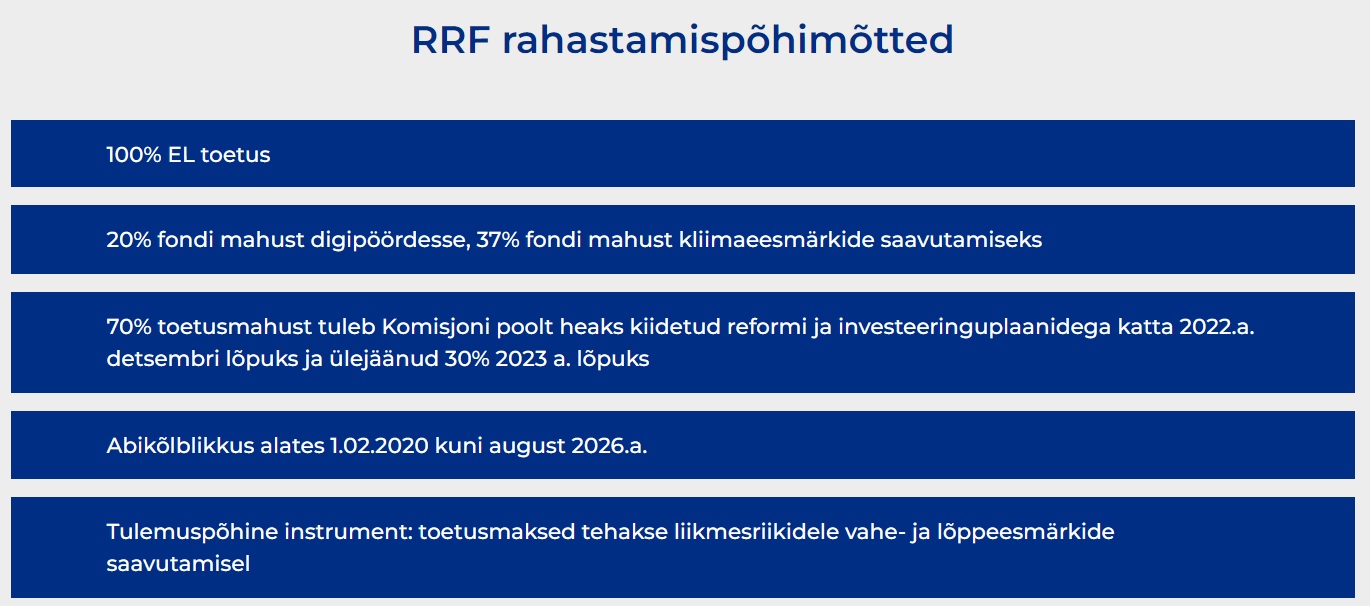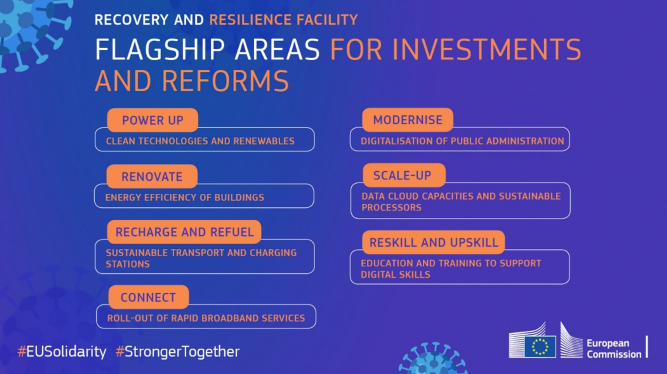The Recovery and Resilience Facility (RRF) is at the heart of the Next Generation EU package. The aim of the facility is to support investment and reforms essential to long-term economic recovery, enhancing the Member States' economies and social resilience, and supporting the green and digital transition.
On May 18, 2022, the European Commission published the "REPowerEU" plan, which aims to quickly transition to clean energy and eliminate the EU's dependency on Russian fossil fuels due to Russia's invasion in Ukraine. The EU imports 90% of the gas it consumes, of which more than 40% came from Russia. 27% of the EU's oil and 46% of the EU's coal imports also came from Russia. To eliminate the dependency of the EU of existing fossil fuels from Russia, it is necessary to save energy and increase energy efficiency, accelerate the EU's transition to clean energy, diversify supplier countries and ensure security of energy supply. These goals can be supported by both investments and reforms and their combinations.
Estonian support from RRF is 863.3 million euros, REPowerEU support is 90.04 million euros.
In total, the EU support to Estonia of the updated recovery plan approved on 16.06.2023 is 953.3 million euros.
Map of projects supported by the Recovery and Resilience Facility
The purpose of the Recovery Facility is to
- promote economic, social and territorial cohesion of the EU by increasing the resilience, crisis preparedness, adaptability and economic growth potential of the Member States;
- mitigate the social and economic impact of the crisis, particularly on women, contribute to the implementation of the European Pillar of Social Rights;
- support the green transition, contributing to the achievement of the union's climate neutrality targets for 2030 and the achievement of the union's climate neutrality target for 2050;
- support the digital transition, thereby contributing to upward economic and social convergence, restoring and promoting sustainable growth and integration of the union’s economy;
- contribute to the creation of new high-quality jobs and strategic autonomy of the union alongside an open economy and adding value for Europe.
According to the original calculations, the support amount of the Recovery and Resilience Facility (RRF) to Estonia was to be 1.1 billion euros, but as a result of the unexpected GDP growth in 2020–2021, our support amount will be decreased to 863.3 million euros.
In order to use the RRF, Member States must draw up a recovery plan that is consistent with country-specific challenges and priorities identified within the framework of the European Semester, national reform programmes (Estonia 2035), state energy and climate plans, fair transition plans, and partnership agreement and operational programmes for shared management funds (Cohesion Policy, Maritime and Fisheries Fund and Internal Security Funds).
It is also recommended that the recovery plan focuses on the seven pan-European flagships, among other things.
Last updated: 16.06.2023



